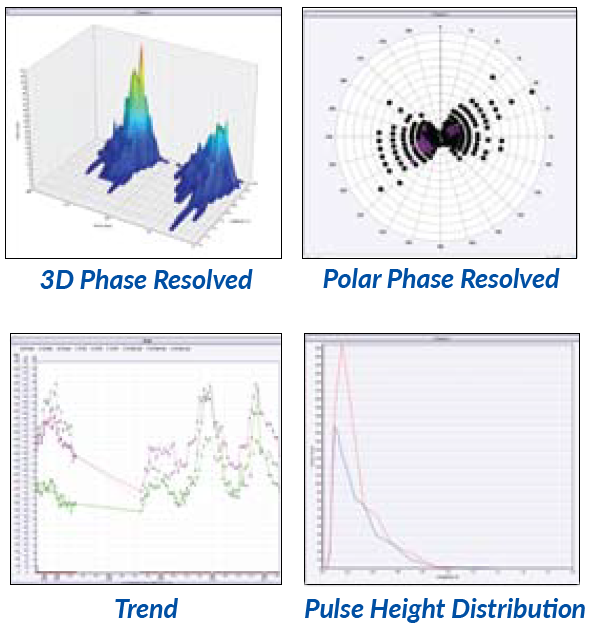- Power Quality Solutions
- Power Quality Measurement Solutions
- Condition Base Monitoring Solutions
- Energy Efficiency Solutions
C-10-01, Oasis Square,
Jalan PJU 1A/7A,
Ara Damansara,
47301 Petaling Jaya,
Selangor, Malaysia.
Rotating Machine Monitor system (RMM)
| Previous | 6 / 20 | Next |
The RMM Sees Deeper Into Your Windings

Coupling capacitors alone provide about 10-15% winding coverage, this is equal to the first two or three coils on large motors and hydro generators and the first bar on large turbine generators. However, the RMM can take data from existing RTD Sensors to see deeper into the windings so that users are continuously updated on partial discharge activities in their rotating machines.
Therefore, using an RMM saves costs, provides better visibility, and allows users to avoid engineering and installation of new sensors.
Optimal Design

The RMM features a minimum of fifteen independent (concurrently monitored), highly sensitive, user configurable input channels; delivering the industry’s best signal-to-noise ratio and allowing connection to any brand of PD sensor!
The RMM is more than just a Partial Discharge (PD) monitor. Inputs are available for six RTD winding temperatures, three load currents, three voltages and six user defined (4 – 20 mA) inputs. The RMM has the capability to perform motor current signature analysis for the detection of broken rotor bars in induction machines. The RMM will store up to two years of data using a first-in, first-out (FIFO) method.
The RMM is also available in an explosion proof enclosure.
Use Data to Make Smart Decisions

See data displayed visually with our dashboard visualization software. The software allows users to configure the instrumentation, download and store data and use tools for data presentation and analysis. The software allows for the trending of all standard quantities of magnitudes, pulse counts, PD Intensity as well as operating dynamics. Multiple channels can be presented on the same screen for easy comparison and analysis.
Communications ports include Ethernet, USB and RS-485 with a standard communication protocol using ModBus. DNP-3 is available upon request. Dry relay contacts are also available to indicate monitor health and alarm conditions.


